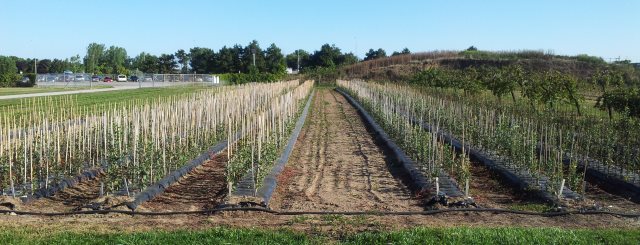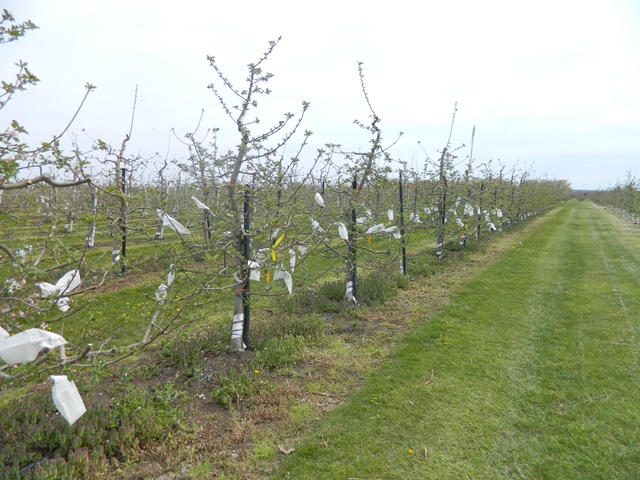
Where apple varieties come from
August 11, 2015
There are many different kinds of apples. In Ontario alone, farmers grow more than 15 varieties of the tasty, crunch fruit.
There are two main ways that new apples are developed: a random discovery of a variety that has evolved on its own in nature, or selective breeding, where apple varieties are specifically selected and grown by plant breeders.
Let’s talk about the random discovery first, also called a chance seedling.
The most famous example of this is the popular Ambrosia apple, which evolved from a chance seedling in an orchard row of Jonagold apples in British Columbia. The seedling grew into a tree and started to produce its first fruit, which was found to be really juicy and sweet.
Ultimately, more trees were grown and through the help of the Summerland Varieties Corporation (SVC), the Ambrosia was brought to market as a commercial apple variety.
Today, Ambrosia apples are grown in North America, Europe, Chile and New Zealand and are a popular variety with consumers. Development of a successful commercial variety from a chance seedling is rare, however; less than a dozen have made their way to market in the last 50 years.
Selectively bred apple varieties are much more common. By choosing certain varieties and crossing them – using the pollen of two “parents” to create new offspring – apple breeders can develop apple cultivars that meet specific criteria for taste, texture and shape, as well as how well a tree will grow in certain climates.
Here you can see mother trees that have been crossed:
This is the way apples have been bred for centuries and is still the main way new varieties are developed today. During the breeding process, breeders evaluate each potential new variety to make sure both the tree and the fruit meet various quality standards. The best ones are selected for further breeding and development until breeders have identified possible candidates for commercial production.
Here you can see you apple trees growing in a seedling nursery:
 Once a promising new cultivar has been identified, breeders use propagation to produce many trees from a single seedling. Plant material from the original tree (the scion) is joined onto a rootstock of another tree through a grafting technique called budding. Nursery workers use small buds to notch into the rootstock. This ensures that all the offspring are identical and have the same characteristics.
Once a promising new cultivar has been identified, breeders use propagation to produce many trees from a single seedling. Plant material from the original tree (the scion) is joined onto a rootstock of another tree through a grafting technique called budding. Nursery workers use small buds to notch into the rootstock. This ensures that all the offspring are identical and have the same characteristics.
The goal of apple breeding is not only to develop a better quality apple, but also one that has the characteristics and traits that consumers want. Once a young tree has been planted, it takes several years for that tree to start producing fruit, so it can take up to 20 years for a new variety to be invented and brought to market for farmers to plant.
The Ontario Apple Growers (OAG) is involved with research through the Vineland Research and Innovation Centre that is working with consumers to determine what kinds of apples they prefer most.
Researchers at Vineland are also looking at ways that the breeding process can be shortened so new varieties can come to market faster. OAG has 11 test sites across the province where new apple varieties are being field tested to see how they grow and perform in Ontario’s growing conditions.
We’ll talk more about both of these in upcoming posts.
For more information about apple breeding:

